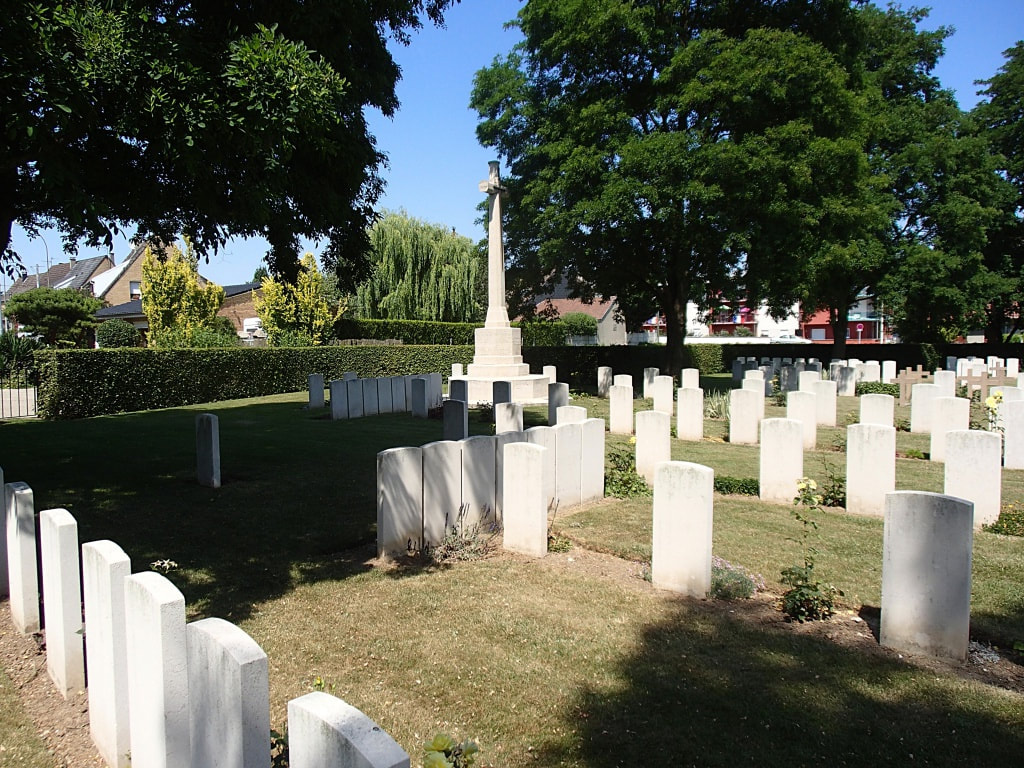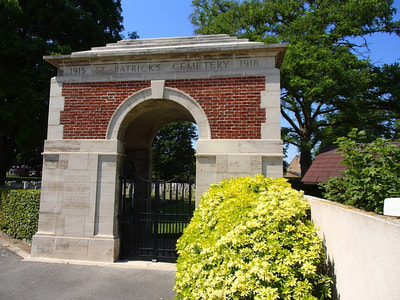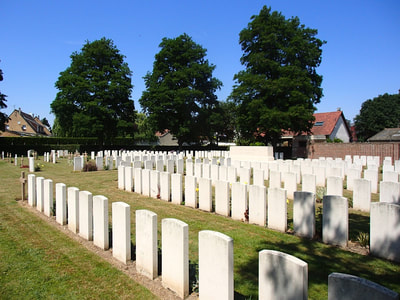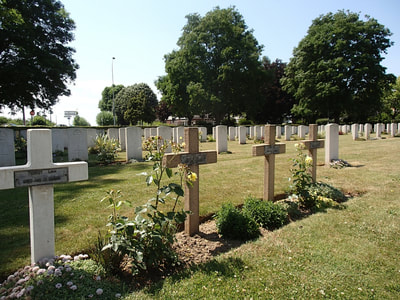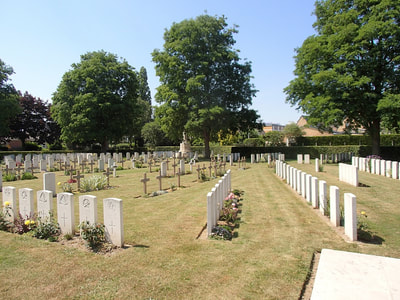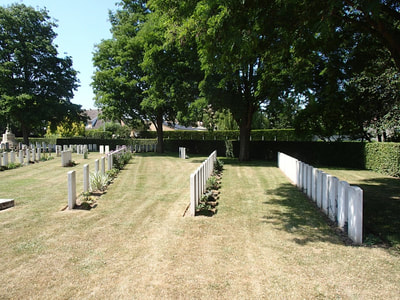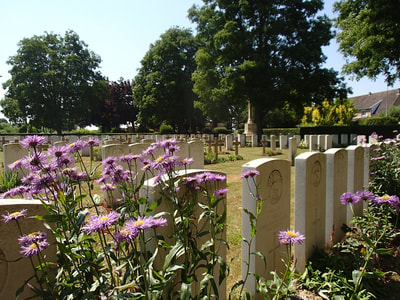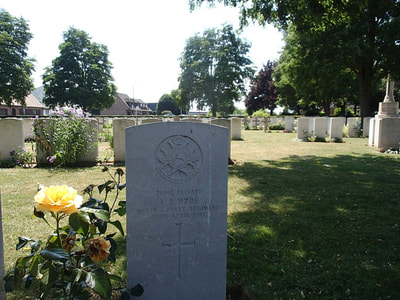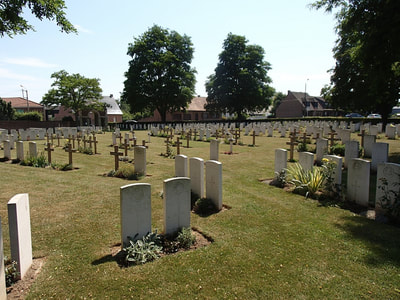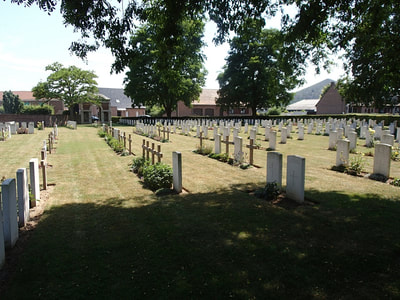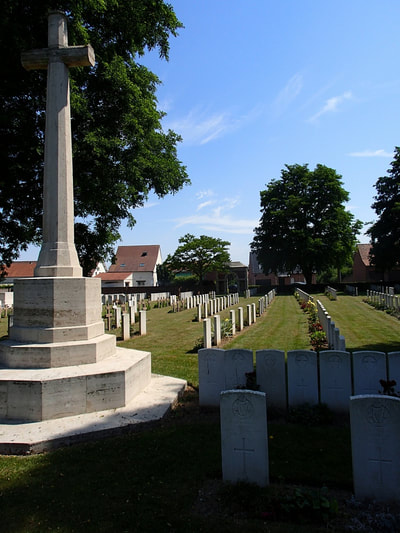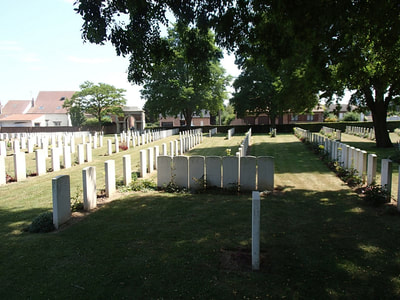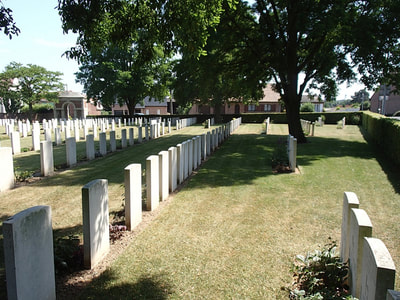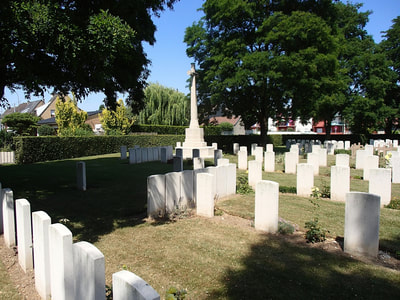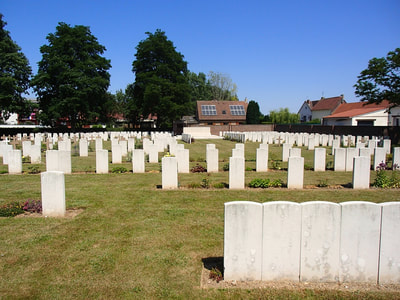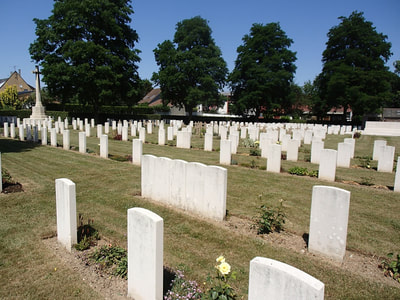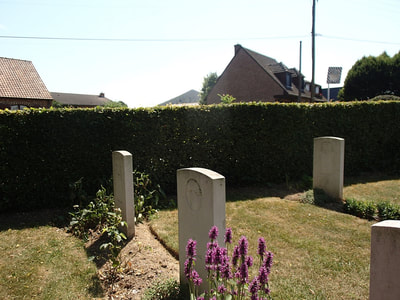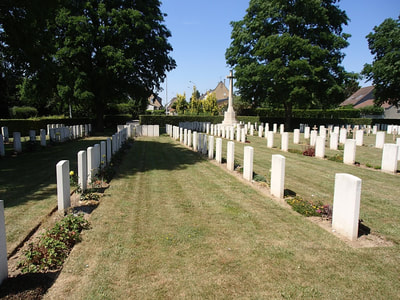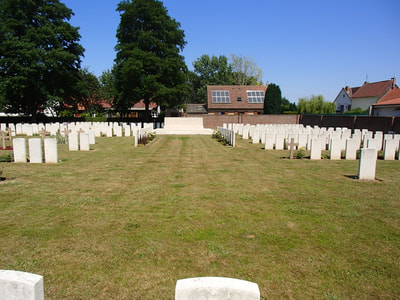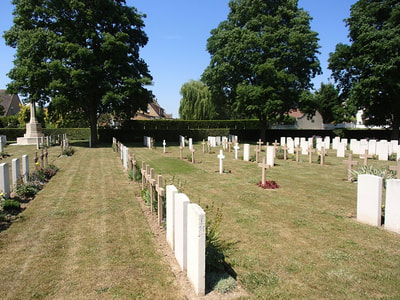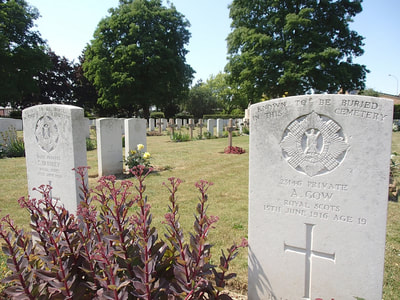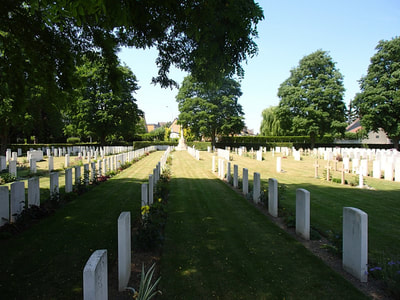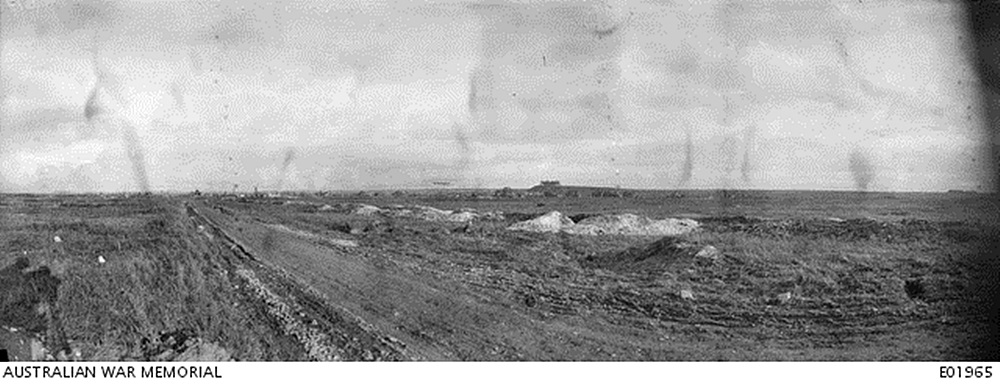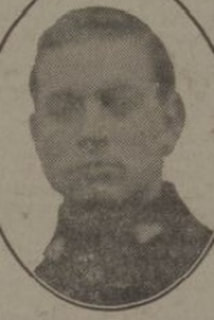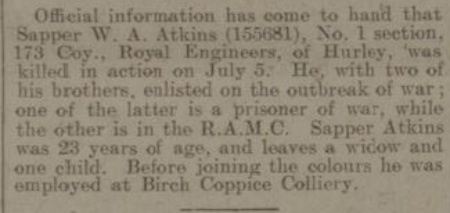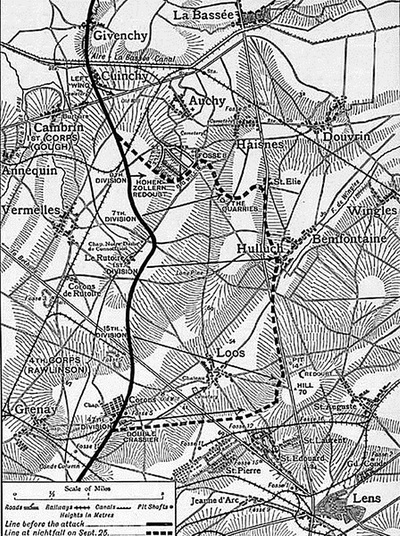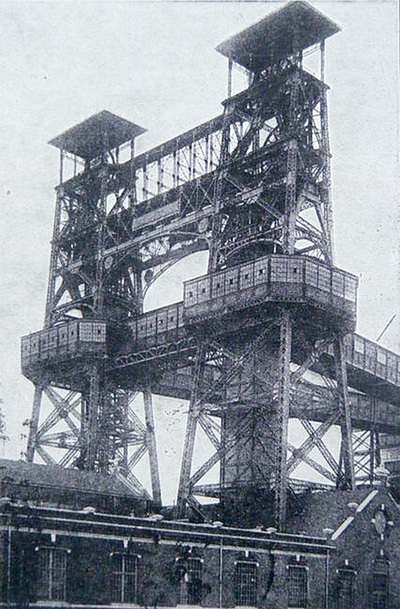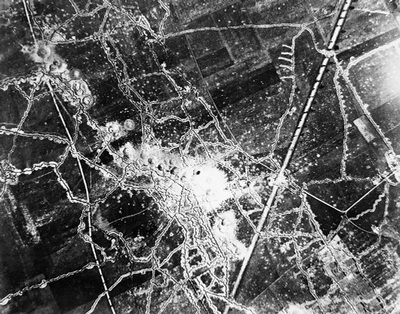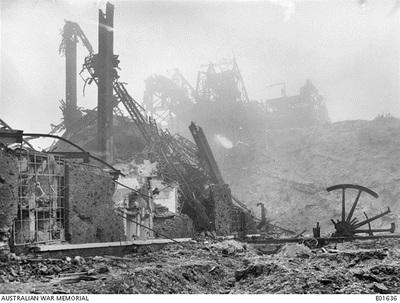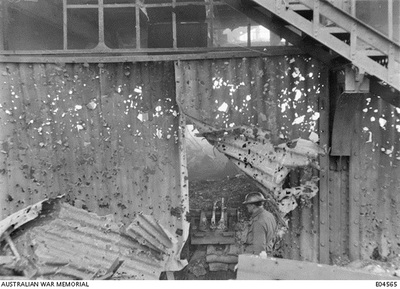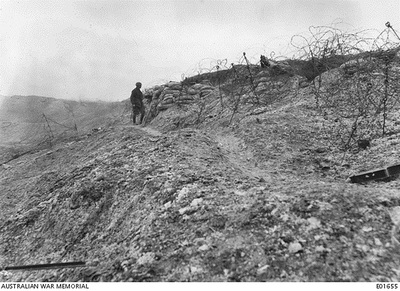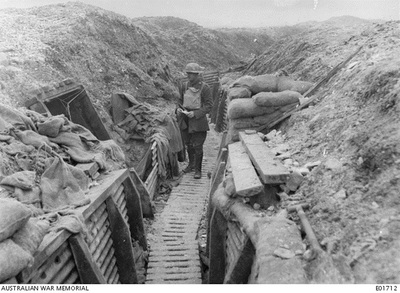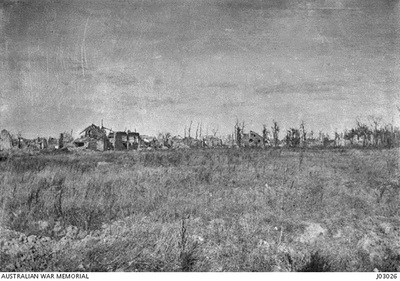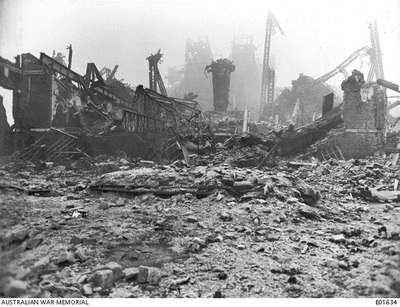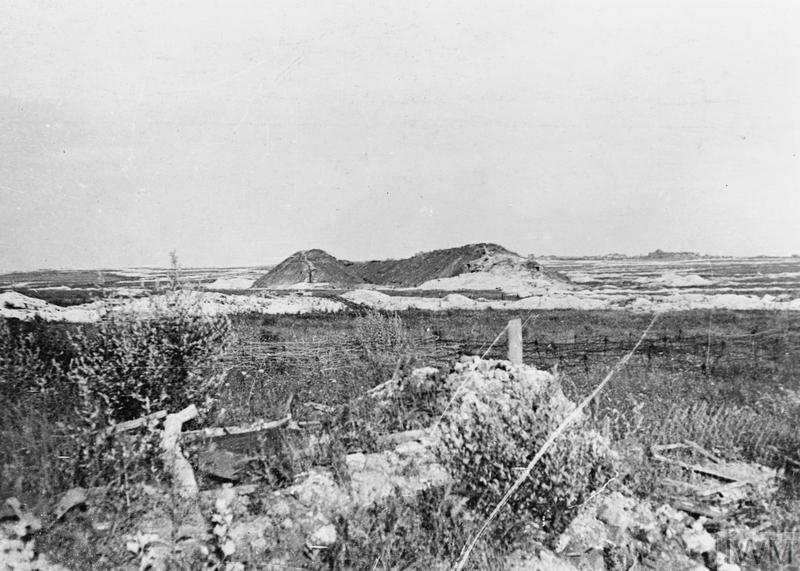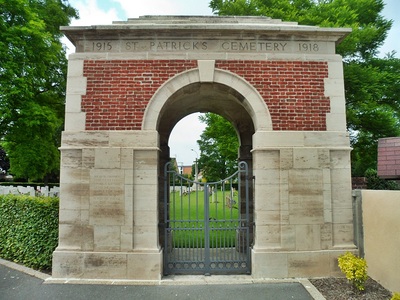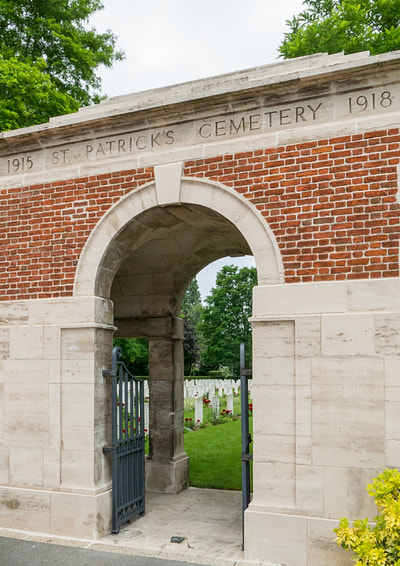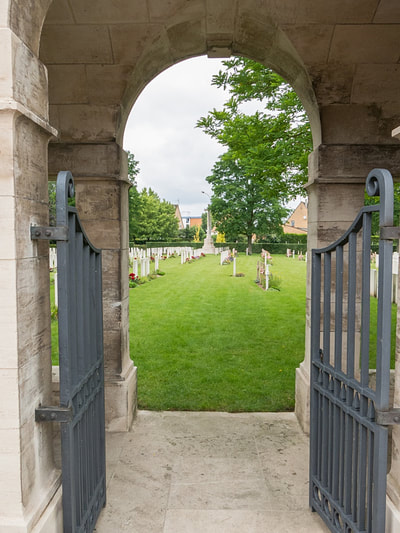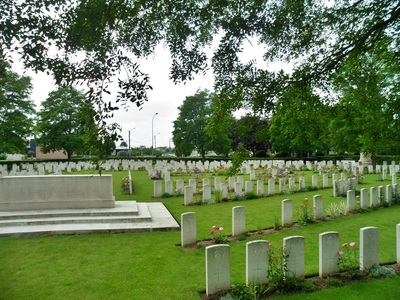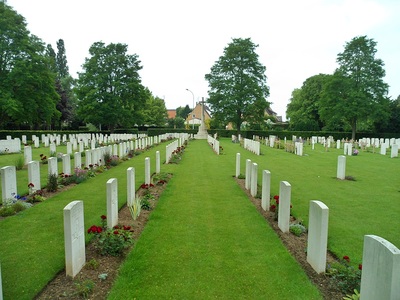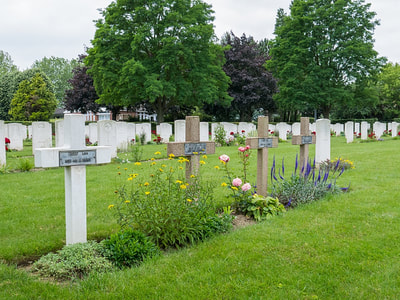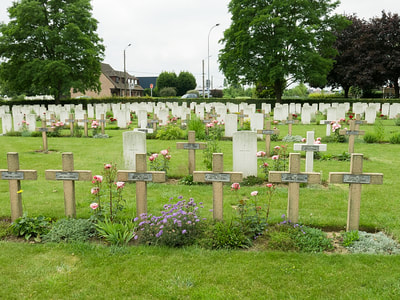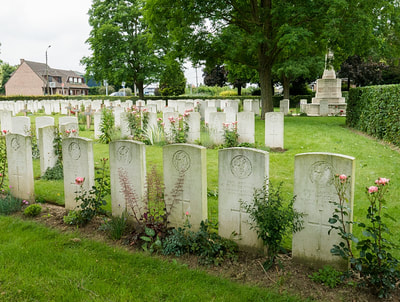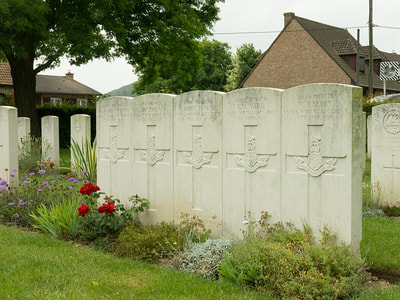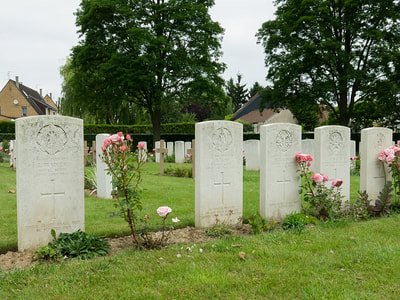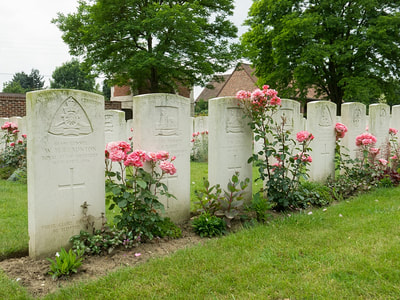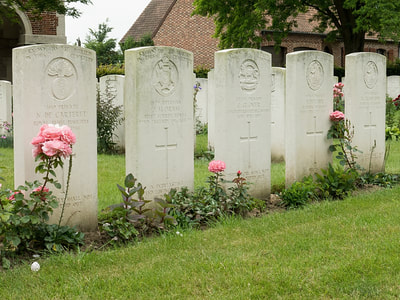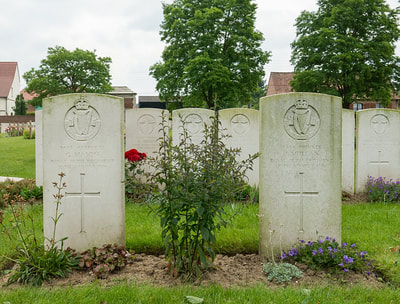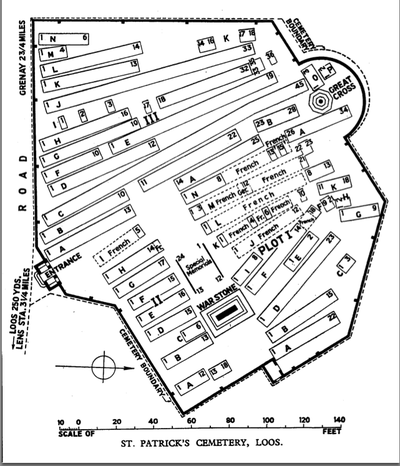ST. PATRICK'S CEMETERY
Loos
Pas De Calais
France
GPS Coordinates - Latitude: 50.45661, Longitude: 2.78888
Location Information
From the National Road (N43 Lens-Bethune), turn onto the D165 towards Loos-en-Gohelle following signs for Wingles and La Bassee. Before reaching Loos-en-Gohelle village square turn left then first left again. The cemetery is located in the street; 'Rue Alexandre Maniez'.
Historical Information
St. Patrick's Cemetery was begun during the Battle of Loos by French and British troops, and used in 1916 very largely by the units of the 16th (Irish) Division. It was closed in June 1918, but a small number of graves were brought into it after the Armistice from the battlefields between Loos and Hulluch. The irregular arrangement of the rows is due to the conditions under which the burials were carried out.
There are now 583 Commonwealth burials of the 1914-18 war commemorated in this cemetery. Of these, 41 are unidentified and the graves of 23, destroyed by shell fire, are now represented by special memorials. There are also 54 French burials here.
The cemetery covers an area of 3,001 square metres and is enclosed by a brick wall.
Casualty Details: UK 570, Canada 13, Germany 1, France 53, Total Burials: 637.
From the National Road (N43 Lens-Bethune), turn onto the D165 towards Loos-en-Gohelle following signs for Wingles and La Bassee. Before reaching Loos-en-Gohelle village square turn left then first left again. The cemetery is located in the street; 'Rue Alexandre Maniez'.
Historical Information
St. Patrick's Cemetery was begun during the Battle of Loos by French and British troops, and used in 1916 very largely by the units of the 16th (Irish) Division. It was closed in June 1918, but a small number of graves were brought into it after the Armistice from the battlefields between Loos and Hulluch. The irregular arrangement of the rows is due to the conditions under which the burials were carried out.
There are now 583 Commonwealth burials of the 1914-18 war commemorated in this cemetery. Of these, 41 are unidentified and the graves of 23, destroyed by shell fire, are now represented by special memorials. There are also 54 French burials here.
The cemetery covers an area of 3,001 square metres and is enclosed by a brick wall.
Casualty Details: UK 570, Canada 13, Germany 1, France 53, Total Burials: 637.
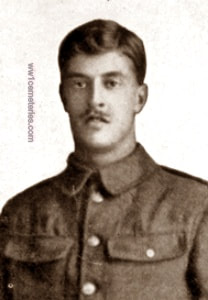
R/14365 Rifleman
Cyril Ewart Beckford
2nd Bn. King's Royal Rifle Corps
17th May 1916, aged 22.
Plot III. L. 7.
Son of Joshua and Elizabeth Jane Beckford, of 14, Waverley Rd., South Norwood, London. Born at Beckenham, Kent.
His headstone bears the inscription; "Christ For Me."
Cyril Ewart Beckford
2nd Bn. King's Royal Rifle Corps
17th May 1916, aged 22.
Plot III. L. 7.
Son of Joshua and Elizabeth Jane Beckford, of 14, Waverley Rd., South Norwood, London. Born at Beckenham, Kent.
His headstone bears the inscription; "Christ For Me."
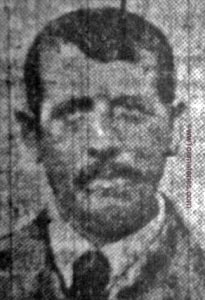
20314 Private
Henry Clitheroe
1st Bn. The Loyal North Lancashire Regiment
13th May 1916, aged 37.
Plot III. L. 5.
Husband of Catherine Clitheroe, of 85, Fylde Rd., Preston. Born at Preston.
His headstone bears the inscription; "On Whose Soul Sweet Jesus Have Mercy."
Henry Clitheroe
1st Bn. The Loyal North Lancashire Regiment
13th May 1916, aged 37.
Plot III. L. 5.
Husband of Catherine Clitheroe, of 85, Fylde Rd., Preston. Born at Preston.
His headstone bears the inscription; "On Whose Soul Sweet Jesus Have Mercy."
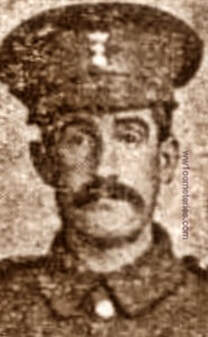
21436 Private
Charles Gillan
8th Bn. Royal Irish Fusiliers
1st June 1916.
Plot III. A. 13.
Charles Gillan
8th Bn. Royal Irish Fusiliers
1st June 1916.
Plot III. A. 13.
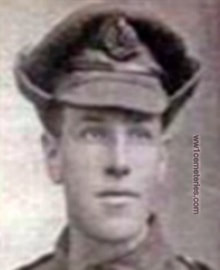
28462 Sapper
Samuel Abiah Love
26th Field Company, Royal Engineers
8th April 1916, aged 23.
Plot III. J. 11.
Son of Robert James and Rachel Love, of Scotch St., Downpatrick, Co. Down
Picture courtesy of Lorraine Rea, Samuel Love was her husbands great-uncle
Samuel Abiah Love
26th Field Company, Royal Engineers
8th April 1916, aged 23.
Plot III. J. 11.
Son of Robert James and Rachel Love, of Scotch St., Downpatrick, Co. Down
Picture courtesy of Lorraine Rea, Samuel Love was her husbands great-uncle
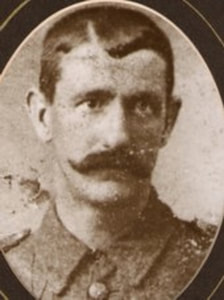
3008 Serjeant
Edgar Murray
1st Bn. Loyal North Lancashire Regiment
14th May 1916
Plot III. L. 4.
Picture courtesy of Alan Hitchcock, grandson
Edgar Murray
1st Bn. Loyal North Lancashire Regiment
14th May 1916
Plot III. L. 4.
Picture courtesy of Alan Hitchcock, grandson
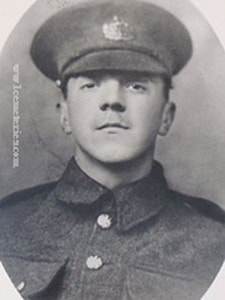
24454 Private
Thomas (Tom) Wasley
1st Bn. Gloucestershire Regiment
28th April 1916, aged 16.
Plot III. D. 10.
Son of Charles Henry and Ellen Wasley.
Tom came from Greet (Winchcombe) in Gloucestershire.
He died on 28th April 1916 aged 16. The battalion moved to the front line trenches on 26th April 1916 near Harrison's crater between Loos and Lens. The battalion diary for 28th April 1916 states that: 'Two sentries were killed when a hostile patrol threw 5 bombs in to our front line.' Perhaps Tom was killed in the incident?
His father Charles was an agricultural labourer. He had a brother Albert who died as a schoolboy and sisters Nora, Amy, Emily, Lucy and Dinah.
Picture courtesy of great nephew, David Wasley
Thomas (Tom) Wasley
1st Bn. Gloucestershire Regiment
28th April 1916, aged 16.
Plot III. D. 10.
Son of Charles Henry and Ellen Wasley.
Tom came from Greet (Winchcombe) in Gloucestershire.
He died on 28th April 1916 aged 16. The battalion moved to the front line trenches on 26th April 1916 near Harrison's crater between Loos and Lens. The battalion diary for 28th April 1916 states that: 'Two sentries were killed when a hostile patrol threw 5 bombs in to our front line.' Perhaps Tom was killed in the incident?
His father Charles was an agricultural labourer. He had a brother Albert who died as a schoolboy and sisters Nora, Amy, Emily, Lucy and Dinah.
Picture courtesy of great nephew, David Wasley
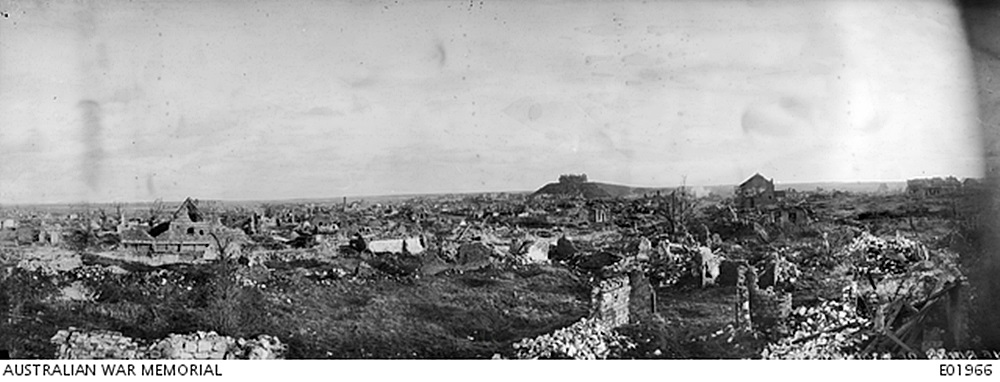
February 1918: A view of the ruins of Loos showing the extent of the destruction wrought by the years of bombardment to which the town was subjected. Beyond the coal mine to the right is the famous Hill 70, in the capture of which the 3rd Australian Tunnelling Company was associated with the Canadians.
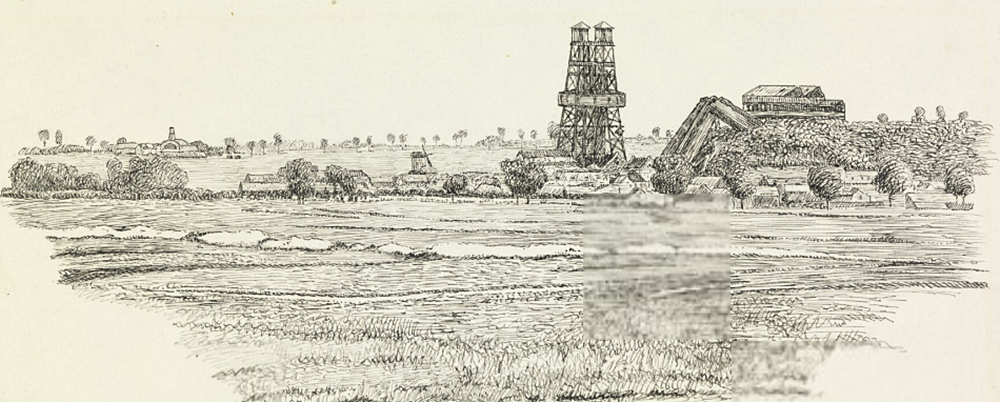
A view across to the distinctive mining village of Loos, dominated in the centre middle ground by the looming metal pit-head, known colloquially as 'Tower Bridge'. There are further mining structures to the right, all surrounded by houses and with a windmill in the centre left. The flat landscape in the immediate foreground is criss-crossed by a network of trenches. Drawn by Geoffrey K. Rose. © IWM (Art.IWM ART 4801)

